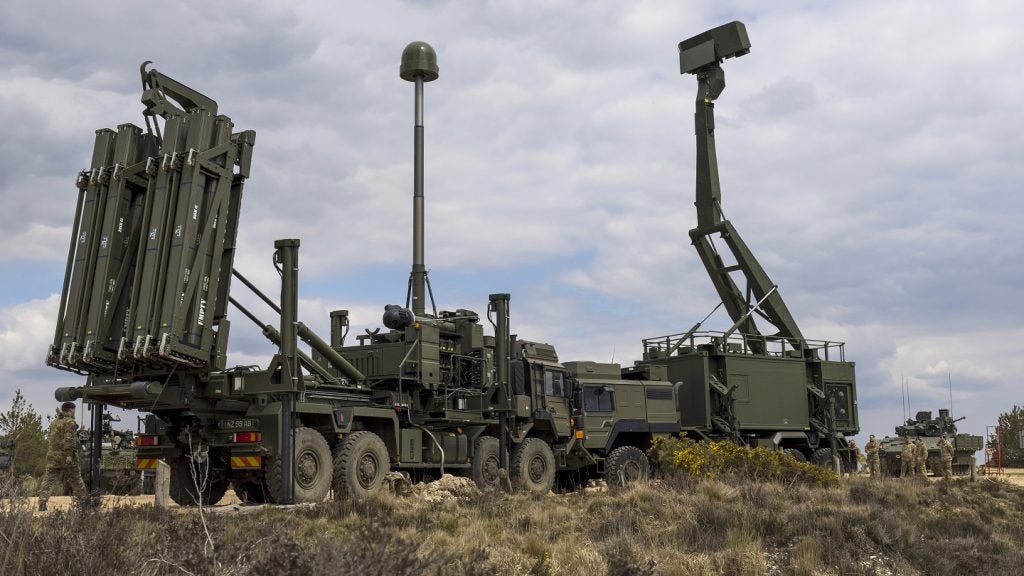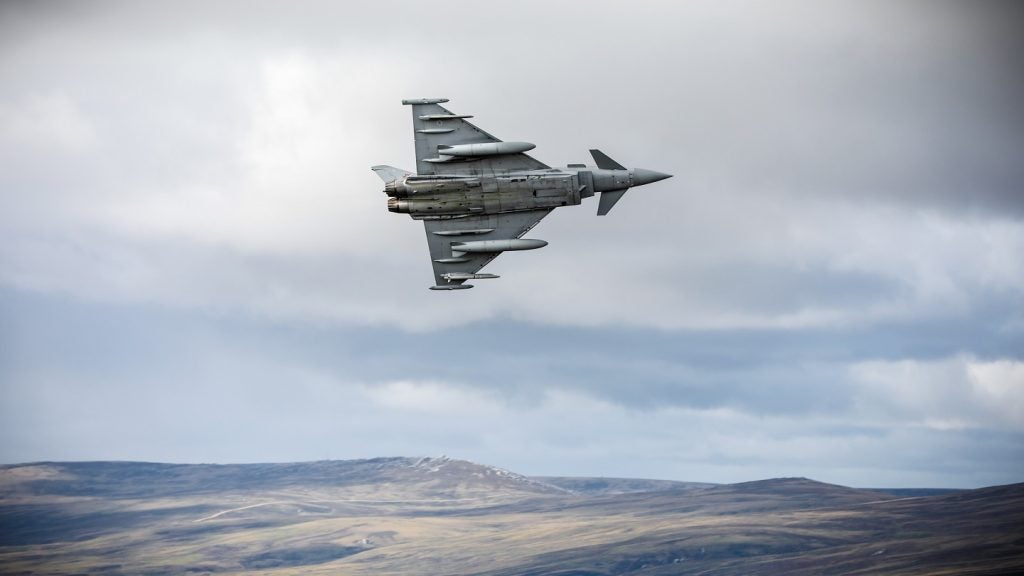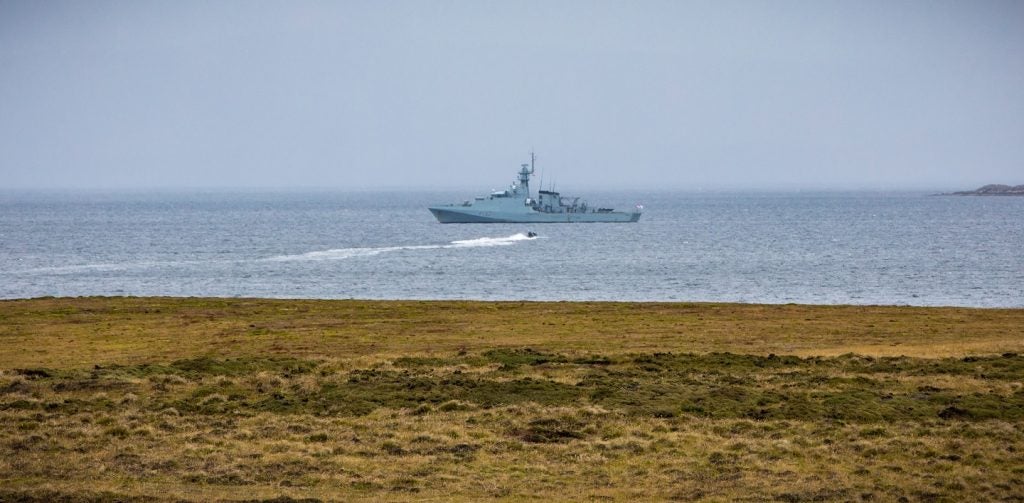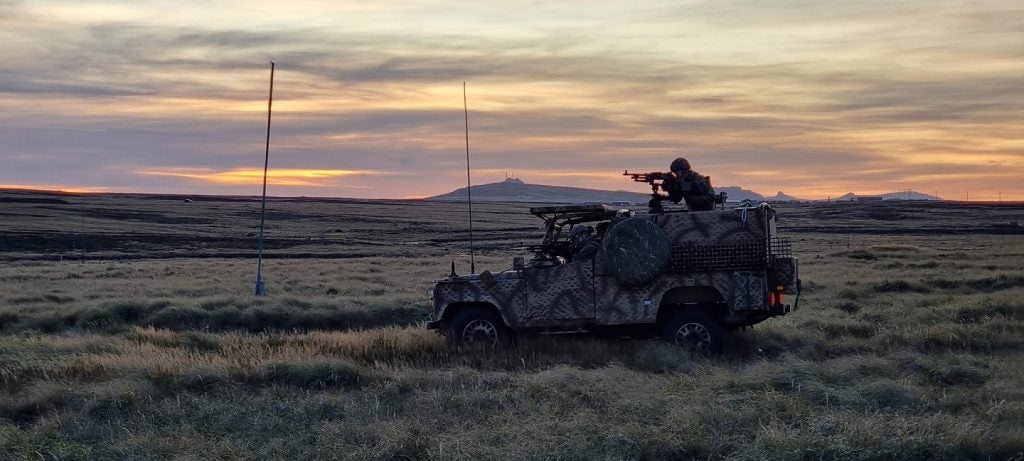
Following the agreement between Denmark and Argentina for the possible sale of a squadron of F-16 fighters to Buenos Aires, renewed attention has been placed on the UK’s ability to defend the Falkland Islands in the South Atlantic, and whether the balance of power is shifting.
Following the 1982 Falklands War between the UK and Argentina, the UK moved to reinforce its ability to defend the Falkland Islands through the creation of a tri-service defence capability. Central to this is RAF Mount Pleasant, an airbase constructed south of the capital city of Stanley on East Falkland.
British Army and Royal Navy assets are also assigned to the territory, with units rotating in and out as required. There are around 1,500 UK military personnel stationed on the Falkland Islands at any one time.
The UK also holds sovereignty over South Georgia and the Sandwich Islands, located some 1,500km further east of the Falkland Islands.
Denmark’s plan to sell 24 of its 43 F-16A/B fighters will provide Argentina with capable fourth generation fighter aircraft, able to conduct a wide range of missions. The deal is also being supported by the United States, with the US State Department publicly stating its “steadfast support” of Argentina’s Air Force modernisation efforts last year.
In January 2024, James Heappey, then UK Minister of State for the Armed Forces, stated in a written UK parliamentary response that he was “satisfied” that the military presence in the South Atlantic was “at the appropriate level to ensure the defence of the islands”.
How well do you really know your competitors?
Access the most comprehensive Company Profiles on the market, powered by GlobalData. Save hours of research. Gain competitive edge.

Thank you!
Your download email will arrive shortly
Not ready to buy yet? Download a free sample
We are confident about the unique quality of our Company Profiles. However, we want you to make the most beneficial decision for your business, so we offer a free sample that you can download by submitting the below form
By GlobalDataBritish Army
The main land elements of the UK’s presence on the Falkland Islands are mainly made up of the British Army’s Royal Engineers and Royal Artillery (RA), with the latter unit operating the Sky Sabre ground-based air defence (GBAD) system.
The Sky Sabre system, operated by 16th Regiment RA, comprises the long-range AMB 3D surveillance radar and the Common Anti-Air Modular Missile (CAMM), which is able to offer medium-range missile and aircraft interdiction at up to 25km, increasing to 45km through the use of the CAMM-Extended Range variant under development.

The Sky Sabre GBAD is also Link 16 capable; a Nato-standard tactical datalink that allows the system to converse with Royal Navy vessels and RAF assets in theatre.
Other land assets include a rotational infantry company, typically of around 100-150 soldiers, augmented by signals, communications, logistics and other elements.
Royal Air Force
The Royal Air Force maintains the most significant contingent of personnel at the Falkland Islands, with RAF Mount Pleasant is main operating base. A single flight of four Tranche 1 Typhoon fighters is based at RAF Mount Pleasant, tasked with air combat patrol of the islands and the surrounding areas.
The Tranche 1 fighters are the oldest versions of the Typhoon, of which 30 remain in service with the RAF, which also operates 107 of the more advanced Tranche 2 FGR4 variants. The Tranche 1 has no ground attack capability, and more limited sensors.

According to the UK Ministry of Defence 26 of the remaining 30 Tranche 1 Typhoons will be retired from service in the end of Q1 2025, indicating a flight of four aircraft will be retained. This could mean the Falkland Islands flight will be retained after that date.
As well as the air combat flight, the RAF operates one transport aircraft (typically an A400M Atlas) and one A330 MRTT air-to-air refuelling aircraft, at Mount Pleasant.
Royal Navy
The Royal Navy maintains a standing patrol frigate to the South Atlantic, while the day-to-day maritime patrol of the islands territorial waters and EEZ is conducted by an assigned Falkland Islands patrol vessel, in this case being the Batch 2 River-class offshore patrol vessel (OPV) HMS Forth, which replaced its Batch 1 predecessor HMS Clyde in 2020.
The Batch 2 River-class OPVs are a new variant of the order Batch 1, being 10m longer (at 90m) compared to the older design, which are 79m in length. The Batch 2s displace around 300 tonnes more than the Batch 1s, at approximately 2,000 tonnes depending on the load.

In addition, the Batch 2 OPVs have a rotary-capable flight deck, enabling small rotorcraft such as the Royal Navy’s Wildcat helicopter to ‘lillypad’ from the vessels. All the Batch 2 River-class OPVs are forward based around the world, with Forth being the vessel committed to the Falkland Islands.
The armament is minimal with a Bushmaster 30mm main gun in addition to a number of .50 calibre machine guns and other small arms. Sensors include a Terma Scanter 4100 2D radar and Kelvin Hughes navigation radar.
HMS Forth is able to use the small dock on East Falklands for local duties, with any maintenance and repairs carried out shipyards in South Africa. In March it was announced that Northern Ireland shipyard Harland & Wolff had been chosen as the preferred bidder by the Falkland Islands Government to build new port facilities in a project that could be worth up to £150m ($151.5m).
Local forces
The small 40-strong Falkland Islands Defence Force (FIDF) is drawn from local military reservists living on the islands, supported by a small permanent (full time regular) cadre. The unit undertakes weekly training with members also able to undertake relevant military training in the United Kingdom.

The FIDF is fully funded by the Falkland Islands Government, with the Governor of the Falkland Islands acting as Commander in Chief. There is one recruitment cycle per year, which is open to men and women resident of the Falkland Islands who hold British or Commonwealth passports.
Equipment is minimal, limited to small arms (SA80 assault rifles), supported by armed Land Rover Wolf 4×4 off-road vehicles.
This article has been updated to correct the published date of the Falklands War.



